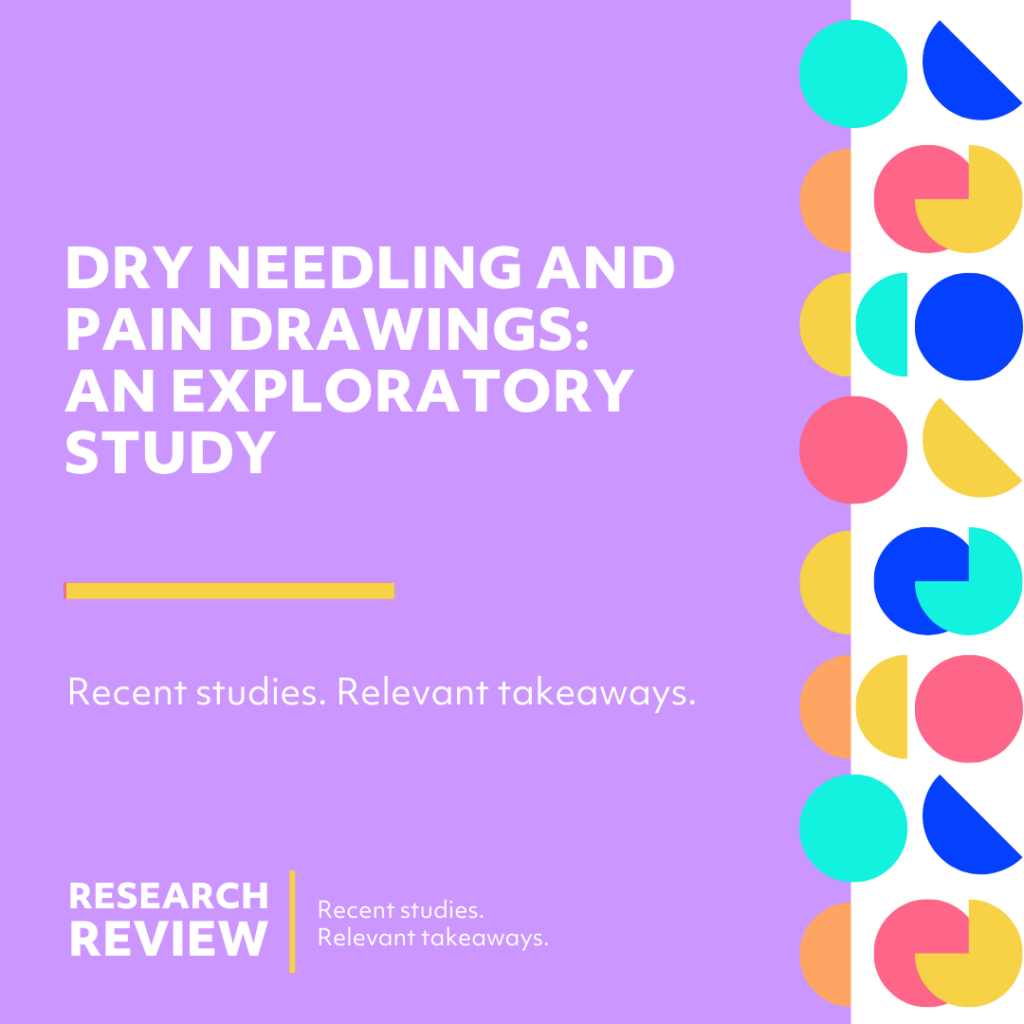
EIM Faculty teamed up on this new and exciting research exploring the results of Dry Needling for spinal pain. Read more and access the full research below:
Background: Emerging evidence shows that altered cortical brain maps play a key role in the initiation and maintenance of a human pain experience and therapeutic treatments may positively influence these maps and reduce pain and disability.
Objective: To determine if dry needling for spinal pain can positively alter body pain diagrams and if those changes correlate to a reduction in self-reported pain ratings.
Design: Case series with pre- and immediate post-intervention measurements.
Methods: A convenience sample of adult patients attending physical therapy with back or neck pain meeting inclusion criteria for dry needling was recruited for the study. Prior to dry needling, patients completed a demographics questionnaire, filled in a body pain diagram (color where you hurt) and a self-reported pain rating (numeric pain rating scale). Patients then received a standard dry needling session for the affected area and immediately following dry needling completed a body pain diagram, self-reported pain rating and satisfaction with the treatment using the global rating of change scale.
Results: Forty-three patients (76.74% female) participated in the study with 19 patients presenting low back pain and 24 with neck pain. Following dry needling, mean pain rating for the whole cohort was reduced (p<0.001), with larger effect for low back pain (p < 0.001) than neck pain (p = 0.031). Overall, the whole patient sample’s body pain diagram decreased in size by 50.16% following DN (95%CI = 10.8, 22.6; t(42)=5.67, p < 0.001). When broken down between neck and low back pain, low back maps shrunk by 61.84% (95%CI= 16.1 – 38.6), t(18)=5.1, p < 0.001), whereas neck maps decreased by 33% (95%CI= 4.3 – 12.2, t(23)=4.4, p < .001). Positive correlations were found between the size of the body pain drawings and pain intensity as well as reduction of pain after dry needling and reduction in body map drawings.
Conclusion: Dry needling can reduce body map drawings, which correlates to the intensity of pain. A potential underlying mechanism of dry needling may be its effect on neuroplasticity. Additional research is needed to further explore these emerging results.
Read the full research here.


